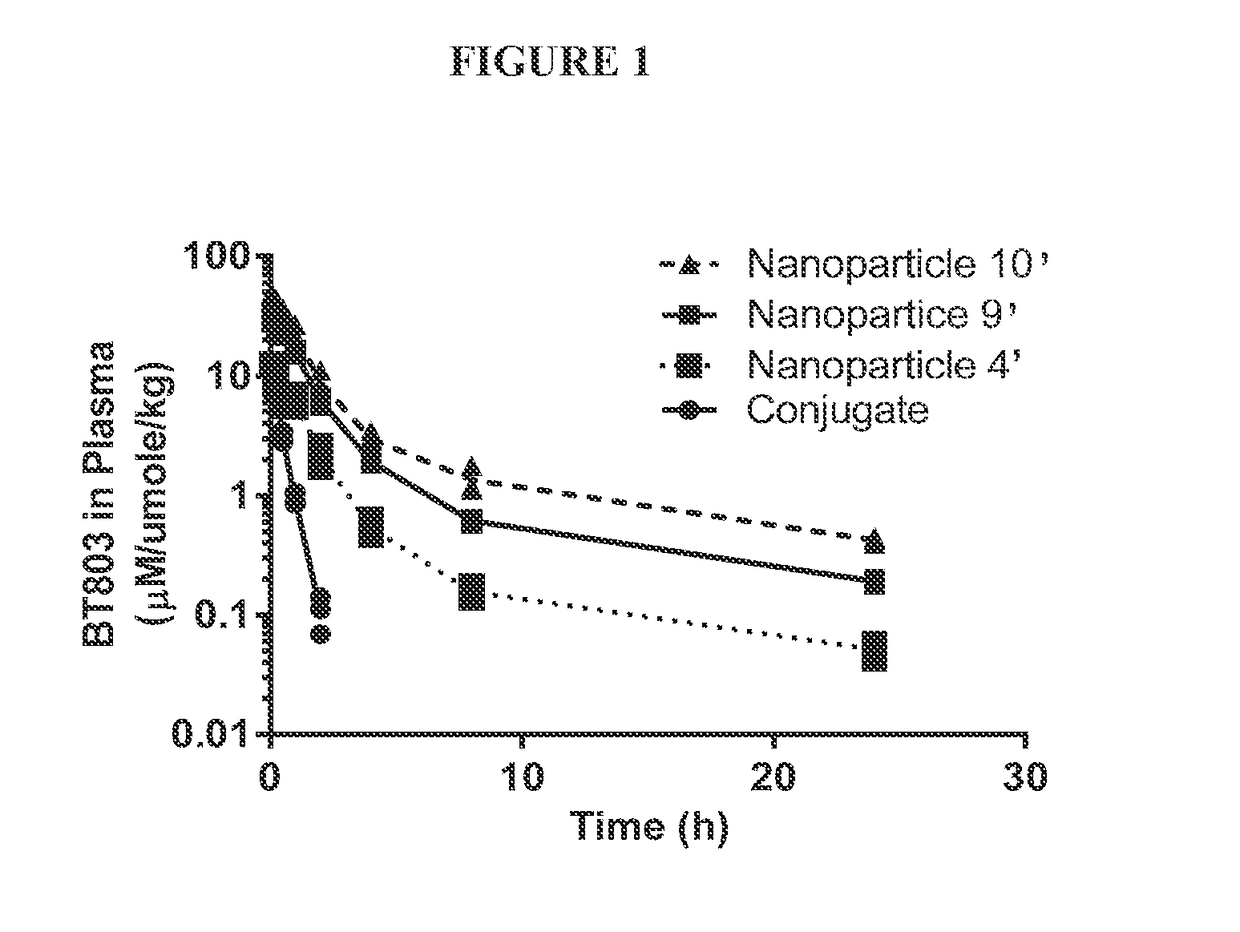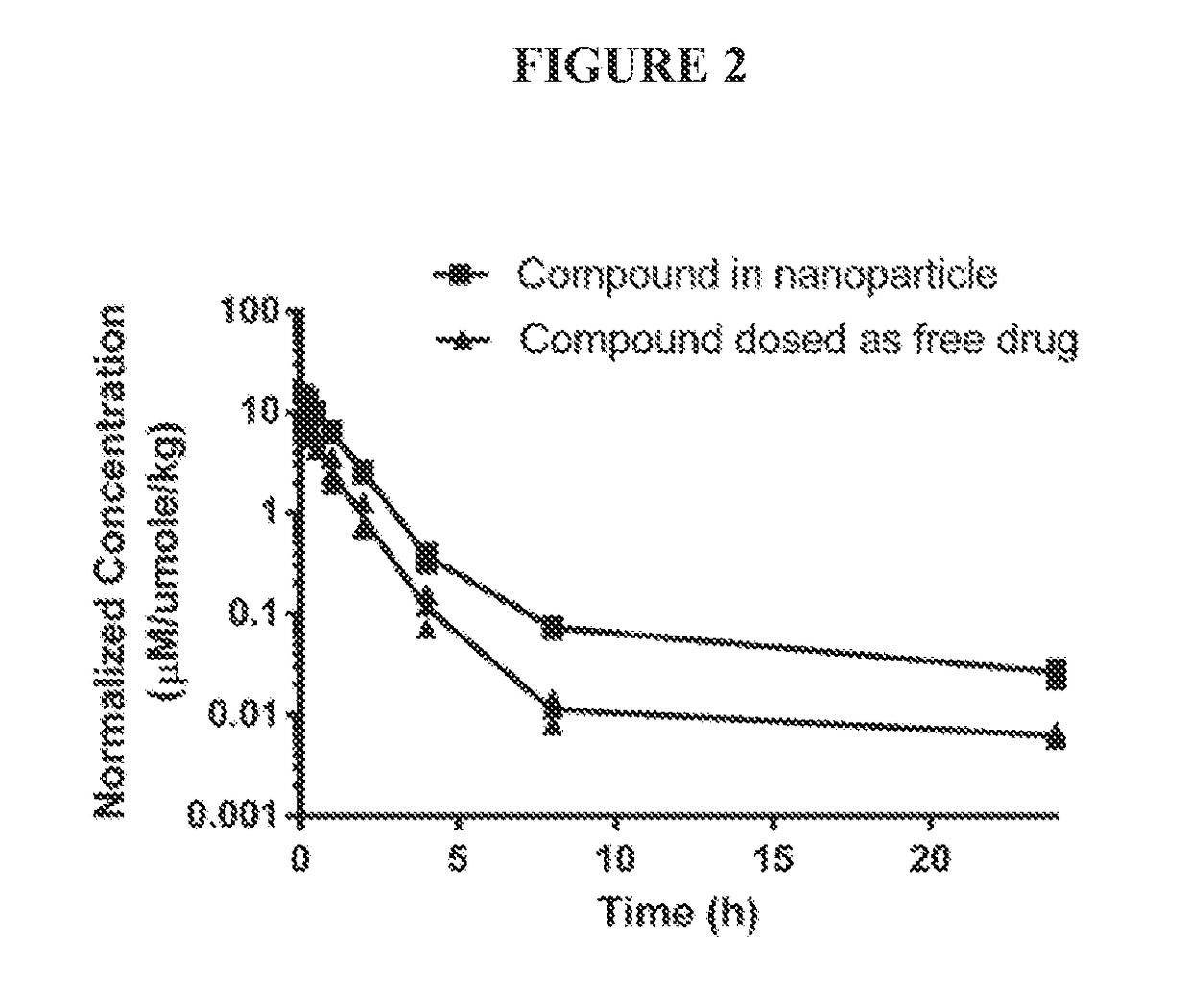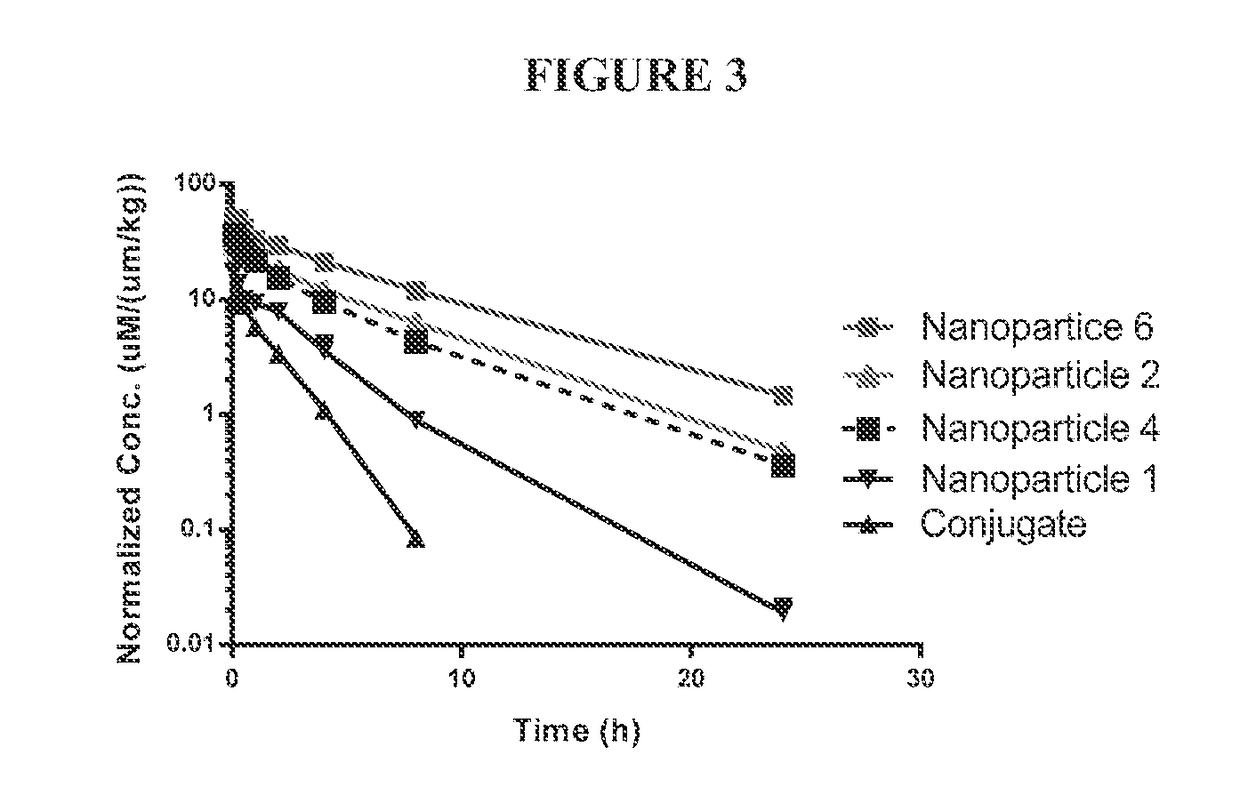Targeted conjugates and particles and formulations thereof
- Summary
- Abstract
- Description
- Claims
- Application Information
AI Technical Summary
Benefits of technology
Problems solved by technology
Method used
Image
Examples
example 1
of Products Using C18 Reverse Phase HPLC (Method 1)
[0631]HPLC analysis of drug conjugates, e.g., RGD-SS-cabazitaxel drug conjugate, was carried out on Zorbax Eclipse XDB-C18 reverse phase column (4.6×100 mm, 3.5 μm, Agilent PN: 961967-902) with a mobile phase consisting of water+0.1% TFA (solvent A) and acetonitrile+0.1% TFA (solvent B at a flow rate of the 1.5 mL / minute and column temperature of 35° C. The injection volume was 10 μL and the analyte was detected using UV at 220 and 254 nm. The gradient is shown in Table 1.
TABLE 1GradientTime (mins)% A% B0955659585958.0195510955
example 2
of Conjugate 1′
[0632]
[0633]A flask was charged with [DLys(6)]-LHRH (430 mg, 0.343 mmol) and trityl-3-mercaptopropionic acid NHS ester (308 mg, 0.676 mmol), and DMF (8 mL) and pyridine (1 mL) were added. The reaction was stirred at 50° C. for 24 h, and the reaction mixture was concentrated in vacuo to a total volume of 2 mL. The reaction mixture was purified by reverse phase chromatography (5% to 50% acetonitrile in water, with 0.1% AcOH) to give [trityl-3-mercaptiopropionylDLys(6)]-LHRH as the bis-acetate salt (311 mg, 0.183 mmol, 53% yield). LCMS M / Z: 792.5 [(M+2) / 2].
[0634]To a solution of cabazitaxel (2.00 g, 2.40 mmol) and 2-(2-pyridinyldithio)ethanol p-nitrophenyl carbonate (915 mg, 2.60 mmol) in dichloromethane (48 mL) was added DMAP (439 mg, 3.60 mmol). The solution was stirred at room temperature overnight, then washed with 0.1N HCl (3×20 mL), brine (50 mL), and dried with sodium sulfate. The solvent was removed in vacuo, the remaining residue purified by silica gel chromatog...
example 3
of Conjugate 3′
[0636]
[0637]To a solution of 2-(2-pyridinyldithio)ethanol (2.00 g, 10.7 mmol) in dichloromethane (20 mL) was added diphosgene (1.06 g, 5.4 mmol) and triethylamine (1.08 g, 10.7 mmol) dropwise subsequently at 0° C., and the mixture was stirred at room temperature for 4 hours. Then HOBt (1.44 g, 10.7 mmol) was added to the reaction mixture, followed by the addition of more triethylamine (1.08 g, 10.7 mmol). After stirring at room temperature overnight, the reaction mixture was concentrated to dryness in vacuo and the residue was dissolved in acetonitrile (20 mL), which was added to H2O (40 mL) to precipitate the solid. The product was collected by filtration, and dried resulting in 2-(2-pyridinyldithio)ethanol HOBt carbonate as a white solid (2.60 g, 7.46 mmol, 70% yield). 1H NMR (400 MHz, CDCl3): δ 8.46 (d, J=6.0 Hz, 1H), 8.22 (d, J=8.8 Hz, 1H), 8.02 (d, J=8.8 Hz, 2H), 7.80-7.62 (m, 1H), 7.71-7.63 (m, 2H), 7.58-7.54 (m, 1H), 7.11-7.08 (m, 1H), 4.82 (t, 0.1=6.4 Hz, 1H),...
PUM
| Property | Measurement | Unit |
|---|---|---|
| Fraction | aaaaa | aaaaa |
| Fraction | aaaaa | aaaaa |
| Mass | aaaaa | aaaaa |
Abstract
Description
Claims
Application Information
 Login to View More
Login to View More - R&D
- Intellectual Property
- Life Sciences
- Materials
- Tech Scout
- Unparalleled Data Quality
- Higher Quality Content
- 60% Fewer Hallucinations
Browse by: Latest US Patents, China's latest patents, Technical Efficacy Thesaurus, Application Domain, Technology Topic, Popular Technical Reports.
© 2025 PatSnap. All rights reserved.Legal|Privacy policy|Modern Slavery Act Transparency Statement|Sitemap|About US| Contact US: help@patsnap.com



